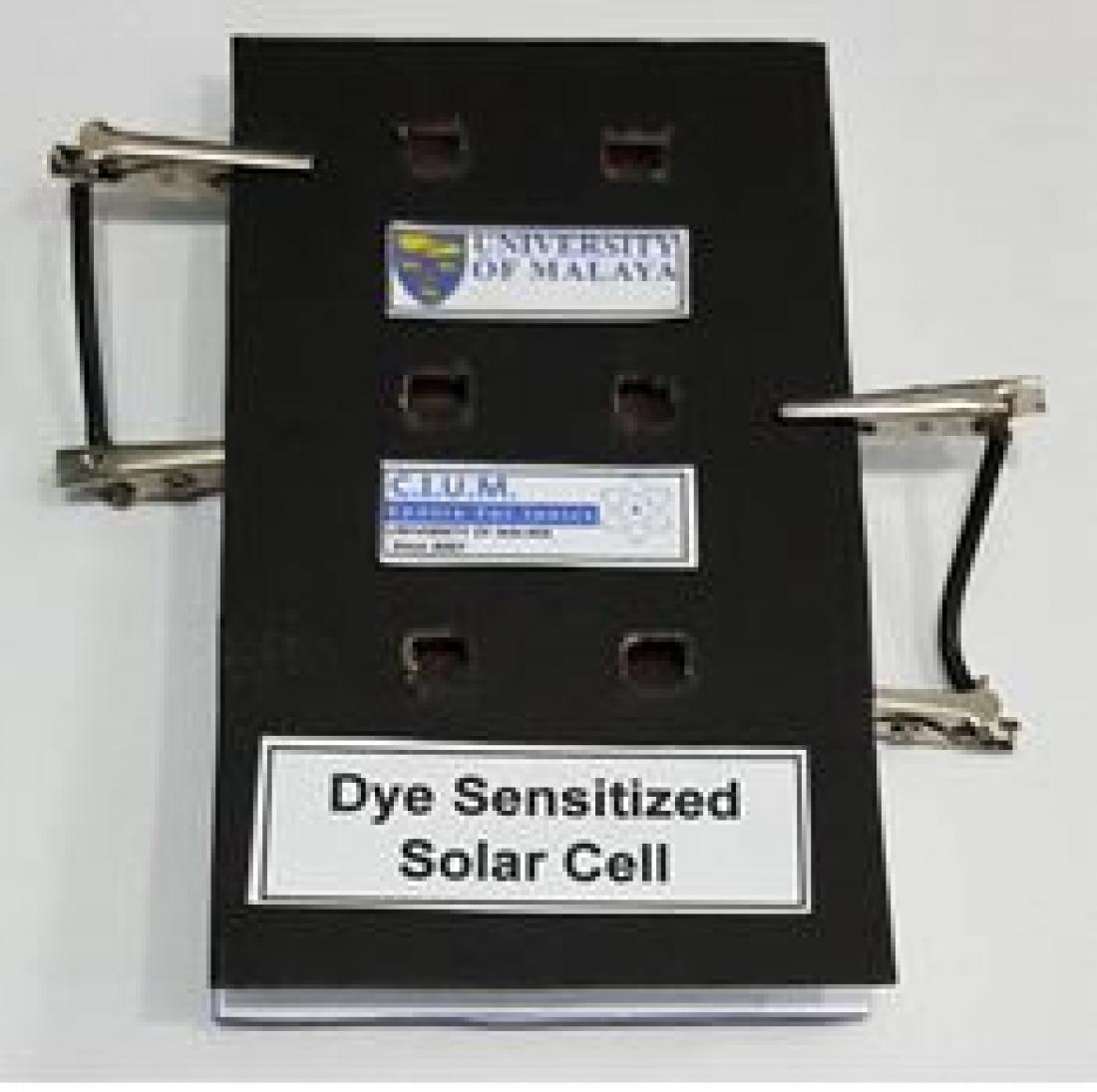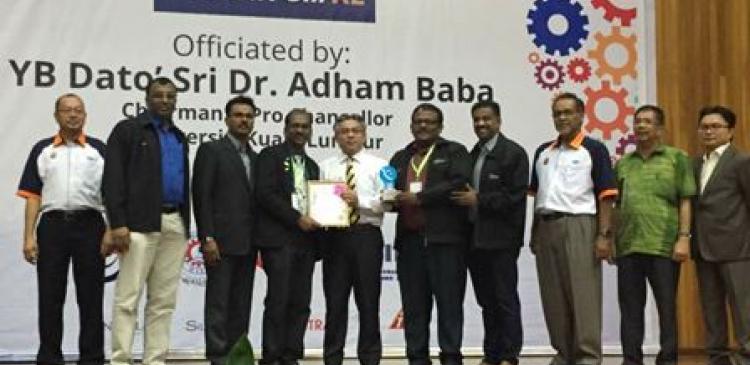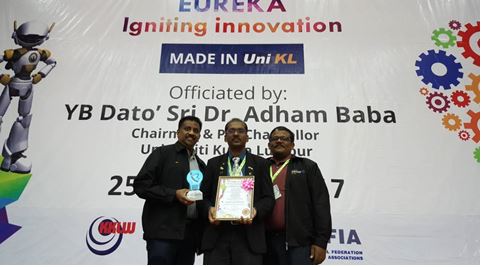A prototype of the NewGenPE-DSSC.
The demand for non-renewable energy resources such as fossil fuels is getting higher nowadays, as a result, these resources are depleting rapidly. The imminent combustion of the fossil fuels is also causing severe environmental pollution and global warming. Due to these facts, the needs for alternative renewable energy resources is increasing, as well as the search for renewable energy resources to replace fossil fuels.
One of the most promising renewable energy sources is solar energy (dye-sensitized solar cell, DSSC) which plays a major role to overcome the current energy crises. Natural polymers have emerged as the leading candidate to be used as the electrolyte in dye-sensitized solar cell (DSSC).These polymers, such as starch and cellulose, are renewable and safe compared with the synthetic polymer.
A group of University of Malaya’s researchers utilized these natural polymers by incorporating salts, plasticizers and ionic liquids to develop superior performing polymer electrolytes. Fundamental properties have been studied to optimize the composition. The best performing electrolyte has been chosen to fabricate dye sensitized solar cells. The researchers found that the maximum efficiency achieved is as high as ~11%, much higher compared to those reported from the available literature.
The team, which comprised of Prof Dr. Ramesh T Subramaniam, Assoc Prof Dr. Ramesh Kasi, Dr. B.Vengadaesvaran, Mr. Mohd Zieauddin Kufian, Ms. S. Vhaissnavi, Ms. Nur Khuzaimah Farhana Abd Aziz, Ms. Norshahirah Mohamad Saidi, Assoc. Prof. Dr. Ezra Morris, Dr. S. Ramis Rao, Prof Dr. Ramesh Singh and Assoc. Prof. Dr. P. Saravanan recently won the Gold Medal and Best Award under the category of “Environmental Protection and Renewable Energy” during International Eureka Innovation Exhibition (i-EIE 2017). This exhibition was held from 25th to 27th July 2017 in Universiti Kuala Lumpur Malaysian Spanish Institute, Kulim Hi-Tech Park under the theme “Igniting Innovation”. This invention has attracted the attention of two industry partners to collaborate with the researchers.
Research is still being carried out to find ways to enhance the efficiency of the DSSC. The industry collaboration is believed to pave the way to further improvement and commercialization of the product. With an increasing awareness about environmental sustainability, innovations are needed to ensure technology development does not compromise the environment.
For more information, please contact:
Prof. Dr. Ramesh T. Subramaniam
Centre for Ionics University of Malaya,
Department of Physics,
Faculty of Science,
University of Malaya, 50603, Kuala Lumpur, Malaysia.
Email: [email protected]
Tel: +603 7967 4391/ +60 12 2148091





